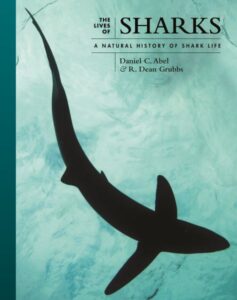 Joining the forthcoming book The Lives of Octopuses and Their Relatives as a new addition to the Princeton University Press The Lives of the Natural World series this coming September is The Lives of Sharks: A Natural History of Shark Life by Prof. Daniel C. Abel and Dr. R. Dean Grubbs.
Joining the forthcoming book The Lives of Octopuses and Their Relatives as a new addition to the Princeton University Press The Lives of the Natural World series this coming September is The Lives of Sharks: A Natural History of Shark Life by Prof. Daniel C. Abel and Dr. R. Dean Grubbs.
Like the other volumes in the series, The Lives of Sharks presents its subjects in a habitat arranged structure that features representative species presented in lively and accessible text that explains shark biology, behavior, and ecology, all of which material is extensively supported by vivid, captivating photos and well-drawn, informative illustrations. Also as with previous volumes, it is bound in a durable case laminate binding that makes it well suited for both school as well as home libraries.
Now, as one who has read and been very much influenced by Dr. David Schiffman’s superb 2022 book Why Sharks Matter; A Deep Dive with the World’s Most Misunderstood Predator, one of the first things I did upon the arrival of this new book was to open it to see the balance of species included. You see, contrary to popular perceptions of sharks that draw heavily on the “charismatic” species such as Great White, Mako, and the hammerheads, half of all known shark species are less than one meter long as adults and do not visually present the image of Jaws, or sometimes even a shark, to most seeing a picture of one. And indeed, The Lives of Sharks does appear to rely heavily on the “big guys” in its imagery.
However this is not meant to be a criticism. I also noted that there was a fair representation of the “little guys” in the species presented. And, as this book is very likely to be a first, or a first significant at least, presentation of sharks and their ecology to many of its readers (remember that school library reference I made just above?) this is both a logical and effective presentation as it helps to use a popular visual image of sharks already firmly held in the minds of its anticipated readers in order to draw them in and offer them a much more well-informed, substantially broadened perspective of these very diverse and too often highly endangered creatures. As the saying goes, “you do your best business on Main Street.”
If you enjoyed reading this, please consider signing up for The Well-read Naturalist's newsletter. You'll receive a helpful list of recently published reviews, short essays, and notes about books in your e-mail inbox once each fortnight.
